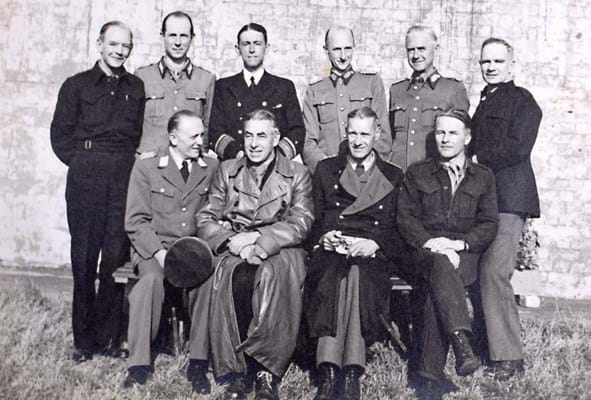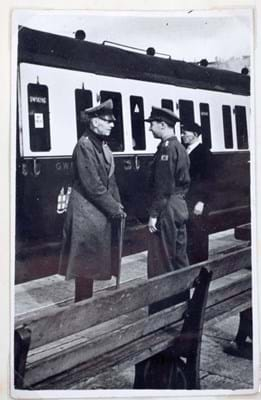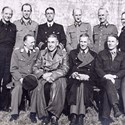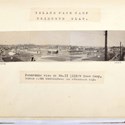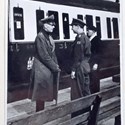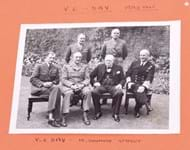Photo albums are often part of those archives and, such is the demand, these items are being sold on their own and results have been strong in recent sales.
Kent saleroom C&T Auctioneers (18% buyer’s premium plus VAT) is reaping the rewards of taking photo albums out of its militaria sales and including them in dedicated Printed Paper, Photograph Albums & Ephemera auctions established under specialist Tim Harper about 18 months ago.
“We always got good results in the military sales with the ephemera but the military sales were getting so big that we wanted to separate it off,” explains Matthew Tredwen, who set up C&T with fellow dealer Glen Chapman in 2013.
“Photos and things like that are such a popular collecting field it seems and we have had some extremely strong results. We are seeing a huge interest in photo albums, but it’s not just albums – we had these daguerreotypes and ambrotypes which did astonishingly well in our March 15 sale, making very strong prices.”
Much of the appeal of albums is along the same lines as medal groups, Tredwen adds. “It’s all about anything you can attribute. With albums and paperwork it’s a bit like with medals. Something unique to that individual or regiment is what attracts people. Whereas a helmet could have been anywhere, an album will really document that person.”
Although the demand for photo albums is wide, it “depends on the quality of the images and those unpublished are obviously popular”.
At C&T, anything to do with China, military or non-military, is a sought-after subject.
On March 15, the third C&T ephemera auction, a 1920s photo album compiled by a member of Royal Navy gunboat HMS Tarantula sold for £1900 (estimate £150-250).
It included pictures relating to the Shaji massacre of protestors at a demonstration in Shamian, China, in 1925.
Tredwen adds that the pre and post-First World War and 1920s-’30s periods are “very hot at the moment” as are views for certain regions such as Singapore. “This was a time when photography was more accessible to the everyday person. That’s why you see a lot more.
“Victorian photo albums are also very, very sought-after, especially out in India or the North-West Frontier.”
Eva Braun’s album
The top-seller in the sale was an original photo album belonging to Hitler’s mistress, Eva Braun. It sold to a European institution for £34,000 (estimate £12,500-18,500).
Edward ‘Dixie’ Dean, one of Fleet Street’s top wartime photographers, obtained the album in Hitler’s bunker from a Russian soldier, whom he watched take it from Braun’s bedroom drawer shortly after she and Hitler had committed suicide.
Along with Richard Dimbleby and Rex North, Dean was among the first journalists to visit the Chancellery and bunker. Included in this lot was a typed account of his hair-raising trip through Russian lines to Berlin, his experiences in the bunker and later at Buchenwald.
With such items provenance is key. “It is pretty critical,” C&T’s Harper says. “We were fortunate we had a vendor with a good trail right back to the actual visit to the bunker. If you can nail that provenance it does hugely affect the value.”
Media coverage also helps to get the best results. Such was the nature of this lot that it was widely featured pre-sale, including on the BBC and ITV news. “For once it all ended up on the box rather than the cutting-room floor because the story resonated with reporters and editors,” Harper says, wryly.
Human factor
Underlining the appeal of the story of the owner of an archive was a collection including photos and a wide variety of documents for Island Farm Prisoner of War Camp 1945-47.
Despite the somewhat idyllic name, this Welsh camp was home to some of the most senior German officers, including von Rundstedt and von Manstein.
That would be interesting enough in itself, but the archive belonged to a remarkable character: Captain Ted Lees. Born Erhard Wilhem Wolf, he left Germany in 1934 with his family to escape Jewish persecution.
Initially held as an alien, he joined the Special Operations Executive (SOE) and undertook missions in Italy before being transferred to Camp 11 (Island Farm) as the intelligence officer and interpreter in 1945.
The collection included a unique photographic history of the camp in an album affixed with the First World War Iron Cross of Admiral Voss. It sold for £8000 against an estimate of £3000-5000 to a UK museum.
Archives are clearly in demand from institutions if this sale is any indicator. As Harper remarks, at a time when money is tight for purchases, “it is great to find there are still opportunities in some museums to spend”.


